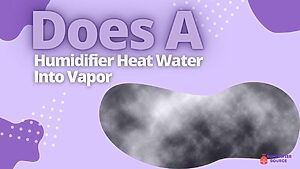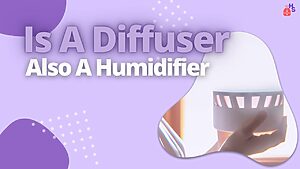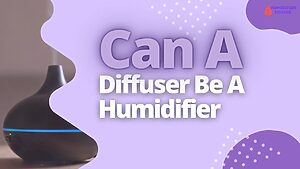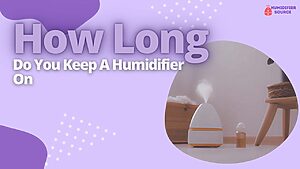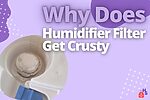Are you using a humidifier? Or are you just wondering how to prevent slime in your humidifier? If so, you’ve come to the right place.
When it’s extra dry outside, you may have to use a humidifier. But you might not realize that it could get pretty gross quickly inside the humidifier. A slime can build up in the humidifier, and it can get pretty awful.
So, how do you prevent slime in your humidifier? In this blog post, I’ll explain what causes slime in humidifiers and provide some tips for preventing it from happening.
Key Takeaway’s
- Slime in humidifiers is usually caused by bacteria or algae.
- To prevent slime, clean the humidifier often and keep it free of standing water.
- Use distilled water in the humidifier to prevent minerals from building up.
- Empty the humidifier and dry it out after each use.
- Store the humidifier in a cool, dry place when not in use.
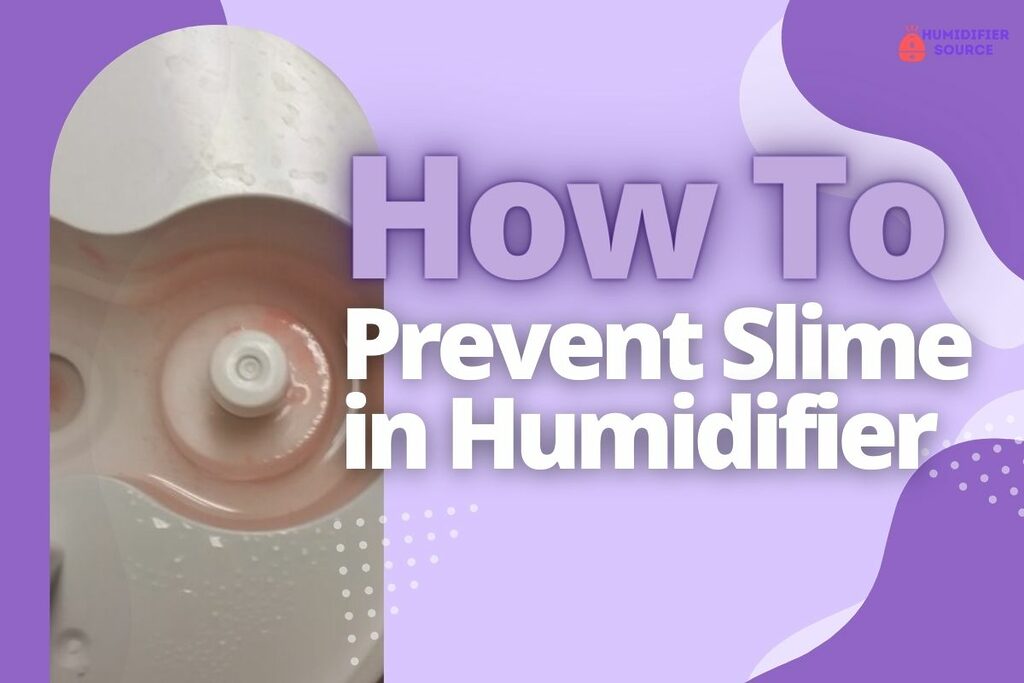
Hear’s How To Prevent Slime In Humidifier
The best approach to keep slime at bay in your humidifier is to clean it on a regular basis. Clean your humidifier twice a week by washing the base with warm water and a small amount of mild soap, like Dish soap. Then, dry the base thoroughly before reusing.
Make sure to clean your humidifier every few days. Use a clean, dry cloth to wipe down the exterior of your humidifier. You can also fill the base of your humidifier with fresh, chilly water and leave it for at least 30 minutes.
Actions To Take For Prevention Of Slime In Humidifiers
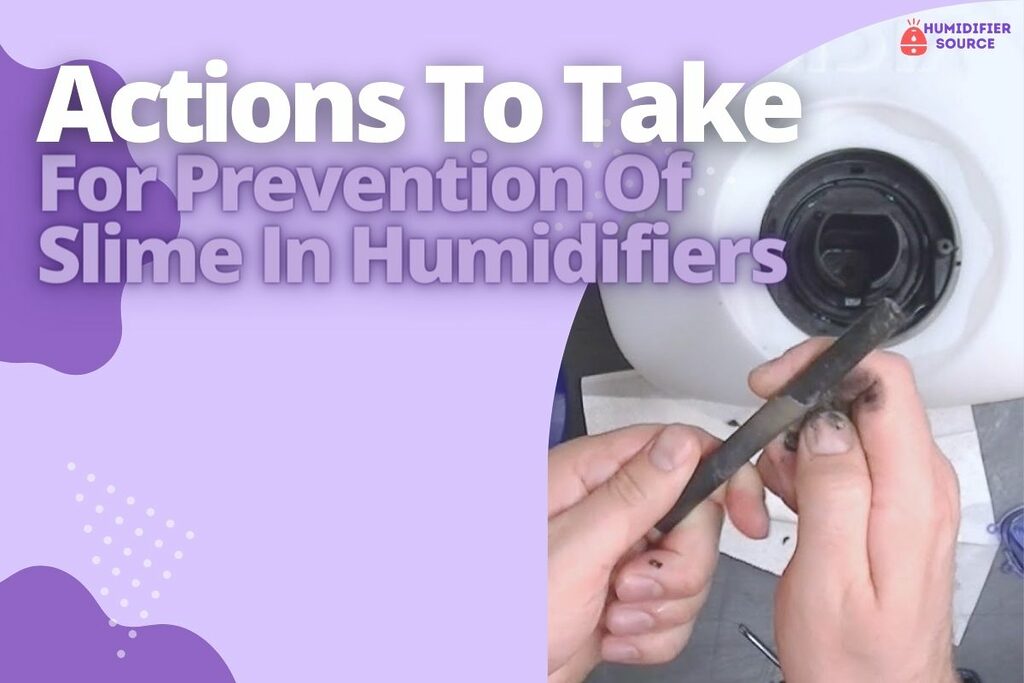
If you notice any slime or other buildup in your humidifier, the following actions can be taken:
Regular Cleaning
To prevent slime and other microorganisms from growing in your humidifier, it is essential to keep the humidifier clean. This is because the humidifier’s water reservoir or the water tank is where slime and other microorganisms can grow.
To clean the water reservoir or water tank, you should first remove any residue built up.
- You can remove residue by rinsing the reservoir or tank with clean water.
- You should also clean the crevices of the humidifier where contaminants can hide.
- To clean the crevices, you can use a soft brush or cloth.
- You should also clean the humidifier’s filter.
- To clean the filter, you should first remove it from the humidifier.
- Then, you should rinse the filter with clean water.
Regular Water Change
Changing the water in your humidifier regularly is one approach to prevent slime accumulation. Depending on the size of your humidifier, the water may need to be changed every few days or once a week.
Empty the humidifier and refill it with fresh water to change the water. While the water level should always be at least half full, never put in all water.
Therefore, if you have a small humidifier, changing the water every day might not be necessary.
Vinegar Wipe
One way to prevent slime from forming inside the humidifier is to wipe down the interior walls of the humidifier with a mixture of vinegar and water.
Vinegar is a natural disinfectant and will help to keep mold and mildew from growing. To make the vinegar mixture, mix 1 cup of vinegar and 1 cup of water.
Wipe off the internal walls of the humidifier with this mixture. Make sure to get into all the cracks and crevices where mold and mildew can lurk. After cleaning, empty the vinegar mixture and refill the humidifier with fresh water.
Hydrogen Peroxide Addition
One of the best ways to prevent slime buildup in your humidifier is to add hydrogen peroxide to the water. This will help to keep the humidifier clean and free of any buildup.
The hydrogen peroxide will also help to kill any bacteria that may be present in the water.
If your humidifier already has slime buildup, hydrogen peroxide can help remove it. You can accomplish this by wiping clean the inside of the humidifier with a moist cloth dipped in hydrogen peroxide.
If the slime is stubborn, you may need to use a toothbrush or other small brush and a thick paste of hydrogen peroxide to remove it. Once the slime is gone, be sure to rinse the insides of the humidifier with diluted hydrogen peroxide.
Other Disinfectant Additives
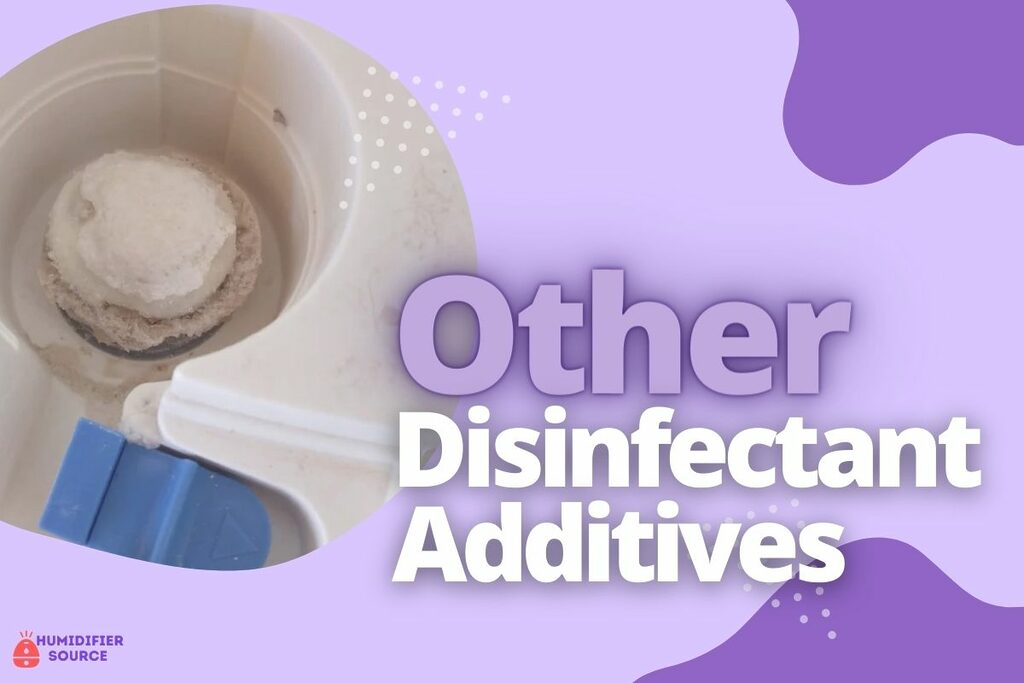
Using a water disinfection ingredient, such as tea tree oil, inside the humidifier will assist with slime. This will assist in eliminating any bacteria and reduce the amount of scum in the water.
Other than bleach and vinegar, a range of disinfectants can be utilized, such as alcohol. They will all kill slime. Also make sure that you are not allergic to them.
Cleaning Cartridge / Tablets
It is important to prevent slime from forming in your humidifier. One way to do this is to use water cleaning tablets. These tablets can help to remove algae, lime buildup, and mold growth.
They can also help to prevent the growth of mold and mildew. Cleaning the cartridge is another way to avoid slime from forming in your humidifier.
This is the first step in preventing the growth of mold and mildew. The cartridge should be replaced every three months.
UV Light
Many people rely on humidifiers to restore moisture into the air as the weather cools and the air becomes drier. However, if not adequately maintained, humidifiers can become a breeding ground for bacteria and mold, which can cause health problems.
Here are some tips for preventing slime in your humidifier:
- Use a humidifier with UV light. UV light helps kill bacteria and mold, keeping your humidifier cleaner.
- Empty and clean the water tank regularly. If water sits in the tank for too long, mold and bacteria can grow.
- Use a mold and mildew cleaner with a humidifier. This will aid in the killing of any germs or mold that may be growing in your humidifier.
Distilled Water
To prevent slime growth, you must use distilled water in your humidifier. Slime is a bacteria that can grow in humidifiers and cause respiratory problems.
Distilled water is liquid water that has been heated and then condensed. This method removes contaminants from the water, such as microorganisms.
You should use distilled water in your humidifier every time you fill it. Distilled water is available at most supermarket stores. Using distilled water in your humidifier will help you breathe easier and prevent slime growth.
Avoid Dark And Wet Environment
A few measures can be taken to inhibit the growth of slime. The first is to place the humidifier in a well-ventilated area. It is critical to keep the humidifier clean and dry at all times.
Exposing the humidifier to sunlight is one of the most effective strategies to prevent slime formation. In addition, sunlight is a natural disinfectant that can aid in the killing of any germs or mold that may be present.
Slime growth is also discouraged in dry settings. This is why it is critical to keep the humidifier clean and dry. The humidifier should be stored in a dry, well-ventilated area when not in use.
What Are The Causes For The Slime?

Mold can form in humidifiers when a buildup of mold spores or bacterial growth. A few different types of molds can cause this, including basidiomycete and Aspergillus.
The most common mold found on humidifiers is Stachybotrys, which thrives in damp conditions. This type of mold produces a slimy substance known as “slime.”
Other slime causes include hard water with high mineral content and condensation from steam from hot water used to clean the unit.
- Condensation: Condensation occurs when moisture builds up on cold surfaces, like those inside your humidifier. It forms tiny droplets that can eventually collect into blobs that look like mold or fungus.
- Hard Water: Hard water contains minerals that can deposit on the surface of your humidifier, forming white deposits known as scale-buildup that resemble mold or fungus.
- Bacterial Growth: Bacterial growth can develop if your humidifier isn’t cleaned properly or becomes contaminated with microorganisms like Staphylococcus Aureus (which is sometimes referred to as MRSA). Bacterial growth, if left unchecked, can eventually lead to slime formation, which must be treated as soon as possible before it becomes a problem for you or your family.
- Spores: Spores are microscopic plant seeds produced by some types of fungi, such as Aspergillus Fumigatus (a species also known as pink mold), which thrive in moist environments like homes and offices during warm weather months. Spores are very small – many times smaller than even bacteria – so they don’t pose any threat but may contribute to bacterial growth if left undisturbed.
How To Remove The Slime From The Humidifier?
To remove all traces of slime from your humidifier where it has appeared. After spotting indicators of slime accumulation, there are a few basic things you should take right away:
- Unplug your machine
- Empty all water from its reservoir
- Gently run an empty sponge over any debris visible inside the tank
- Use distilled water instead of tap water next time you fill up your reservoir
It’s important not to leave limescale buildup on heating elements because this will gradually wear them down faster than they would if cleanings were done regularly. The limescale buildup will also be more difficult to remove once formed.
Use vinegar diluted with 1 cup distilled water per gallon of distilled water in place of the regular cleaning solution. Next time you use your machine, follow these steps again.
Is It Safe To Use A Humidifier Having Slime In It?
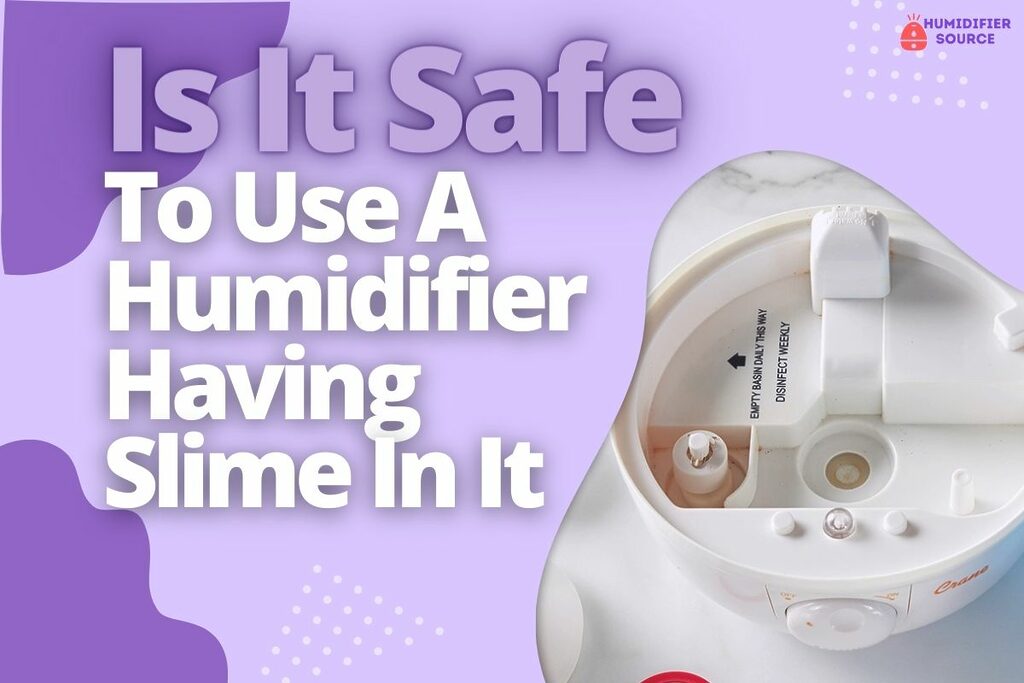
No, not safe at all! Slime could trigger asthma attacks among sensitive persons. However, mild cases could go unnoticed by others, who might notice only slight irritation from inhaling dust particles caused by sticky mucous membranes coming into contact with dust particles already present in the environment.
You should avoid using a home humidifier if there is any question about whether it was responsible for causing any allergic reactions.
Slime Can Damage The Humidifier
Slime can damage the humidifier when it gets into it. This is because water cannot circulate through a foreign substance, which happens when you have slime in your humidifier.
If this happens, your humidifier will not work properly. And may even break down faster due to all of the damage that has been done to it.
However, do not panic if you notice any slime signs in your humidifier. Instead, remove the cap and run a few clean cycles to eliminate any accumulated debris before continuing your routine.
Can Slime Grow Out Of Humidifier?
Slime can grow out of your humidifier as well. Although this is rare, it does happen from time to time. The most typical slime that grows out of a humidifier is mold spores or mildew spores – both are extremely hard to get rid of once they’ve formed.
To prevent slime from growing out of your humidifier, thoroughly clean it regularly and use distilled vinegar as an antifungal agent if necessary.
Some types of slime can form after using an evaporative cooling device like a cool-mist humidifier. However, as long as everyone involved in its use follows correct cleaning and maintenance methods, this isn’t something to be too concerned about.
As long as there aren’t any obvious signs that something has gone wrong such as burnt-out coils or clogged filters, there shouldn’t be anything else that needs doing other than ensuring everything has been cleaned thoroughly after every use.
Is It Okay To Have Slime In My Humidifier?
Slime is a natural by-product of the bacteria that grows on your humidifier. Bacteria produce the sticky stuff that makes up slime. When you use a humidifier, this same type of bacteria starts to grow on the water inside it, and as it does, it produces slime.
The slime is harmless to people and pets, but it can make your humidifier less effective over time. If you have any concerns about whether or not having slime in your humidifier is safe for you or your family, talk with your doctor.
Can Slime Inside The Humidifier Make You Sick?
Slime inside a humidifier does not typically make someone sick. However, when exposed to dampness and warm temperatures for extended periods, there is always the potential for bacterial growth.
If you have concerns about bacteria growing in your humidifier, clean it regularly with vinegar or bleach solutions and replace older tanks that may be more susceptible to mold growth.
Moreover, the slime itself does serve a purpose; it acts as a lubricant and can help extend the life of moving parts like the fan in your humidifier.
Conclusion
Many people suffer from problems related to slime and bacteria in their humidifiers. It can be frustrating knowing that you’re struggling with this issue and not being able to find a solution.
But the truth is, it’s one of the most important tasks you need to do to keep it in good working order. By following our guide, you’ll be able to keep your humidifier clean and free from slime and bacteria growth.
Furthermore, by cleaning it regularly, you will eliminate any potential complications. So please don’t put it off any longer; begin routine maintenance today!
Frequently Asked Questions
How often should I clean my humidifier to prevent slime buildup?
Ideally, it would help to clean your humidifier every week to prevent slime buildup. However, if your humidifier frequently shows signs of wear and tear (e.g., frequent clogging), it may need to be cleaned more often.
Why does my humidifier get slimy?
Slimy bacteria grow in humidifiers when the spores land on stagnant water. When left untouched, these bacteria will produce a film of mucus that can collect dust and sediment.
The resulting slime creates an ideal breeding ground for other bacteria to grow. However, if you make sure to clean in between your daily tasks, the slime will not have enough room for new bacteria growth.
How do I keep pink slime out of my humidifier?
To keep pink slime out of your humidifier, clean it regularly using our guide. In addition, avoid using humidifiers in high-traffic areas inside your home, as this will increase the number of bacteria that can accumulate.
Author
- Does A Humidifier Heat Water Into Vapor (You’ll Be Surprised)
- Is Using A Humidifier Good For Eczema? – Find Out Here
- Keep Safe: Can Humidifiers Cause Fires?
- Humidity Control: Fan Or Humidifier? (Solve The Dilemma)
- Is A Diffuser Also A Humidifier (Discover The Difference)
- Can A Diffuser Be A Humidifier (Discover Now)


